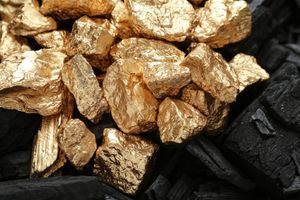
As the calendar turned to April 2025, financial markets found themselves in a precarious position, teetering on the brink of a full-blown bear market. Investor fears, fueled by persistent inflation, aggressive interest rate hikes, and escalating geopolitical tensions, coalesced into a potent wave of pessimism that briefly dragged the S&P 500 into bear-market territory. In this climate of widespread uncertainty and panic selling, a select group of resilient dividend-paying stocks emerged as beacons of stability, offering investors a much-needed refuge from the storm. For many, the foresight to hold onto these defensive giants proved to be a pivotal decision, safeguarding portfolios against what could have been a sustained and devastating market meltdown.
The brief but intense market correction underscored a critical lesson for investors: while growth stocks often capture headlines during bull runs, it's the steadfast, income-generating companies that provide ballast when the seas get rough. As the S&P 500 dipped more than 20% from its recent highs, signaling bear market conditions, the broader market witnessed a sharp flight to quality. This period highlighted the enduring value of businesses with strong balance sheets, predictable cash flows, and a commitment to returning capital to shareholders through consistent dividends.
April 2025: A Tumultuous Turn for Global Markets
The seeds of April's market turmoil were sown months prior, with a relentless surge in inflation forcing central banks, particularly the U.S. Federal Reserve, to adopt an increasingly hawkish stance. Interest rate hikes, initially seen as a necessary measure to cool an overheating economy, began to spark fears of an impending recession. Compounding these economic anxieties were geopolitical flashpoints, including renewed trade tensions and regional conflicts, which added layers of uncertainty to global supply chains and corporate earnings outlooks. By early April, a combination of these factors led to a significant erosion of investor confidence. Major economic indicators, from manufacturing output to consumer spending, showed signs of weakening, further justifying the widespread pessimism.
The timeline leading up to this moment was characterized by a gradual but steady decline in market sentiment. Throughout late 2024 and Q1 2025, analysts frequently downgraded earnings forecasts, and corporate guidance became increasingly cautious. The bond market, often a precursor to equity market movements, flashed recessionary signals with an inverted yield curve. When the S&P 500 finally breached the 20% decline threshold in the second week of April, it triggered a wave of automated selling and heightened media attention, amplifying the sense of crisis. Key players involved included institutional investors rebalancing portfolios, retail investors reacting to negative headlines, and central bank officials whose pronouncements were scrutinized for any hint of policy shifts. Initial market reactions were swift and severe, with broad-based declines across most sectors, particularly in technology and other growth-oriented segments that are more sensitive to economic slowdowns and higher interest rates. The VIX "fear index" spiked, reflecting the elevated levels of market volatility and investor anxiety.
Defensive Dividends: A Portfolio's Anchor in the Storm
Amidst the market's turbulence, certain companies, particularly those with a history of consistent dividend payments and operations in essential sectors, demonstrated remarkable resilience. These "defensive" stocks became safe havens, providing both capital preservation and a steady income stream when capital gains were scarce. Two such stalwarts that exemplified this resilience and for which many investors were thankful to own this year are Johnson & Johnson (NYSE: JNJ) and Duke Energy Corporation (NYSE: DUK).
Johnson & Johnson (NYSE: JNJ), a global healthcare behemoth, proved its mettle once again. As a diversified company operating across consumer health, pharmaceuticals, and medical devices, J&J provides products and services that remain essential regardless of economic conditions. Demand for critical medicines, medical procedures, and everyday health products tends to be inelastic, ensuring stable revenue streams even during a downturn. J&J's long-standing status as a "Dividend Aristocrat" and "Dividend King"—having increased its dividend for over 60 consecutive years—underscores its commitment to shareholder returns and its robust financial health. Its strong balance sheet and ability to generate consistent free cash flow allowed it to maintain and even increase its dividend payout, offering investors a reliable income stream that helped offset broader market losses.
Similarly, Duke Energy Corporation (NYSE: DUK), one of the largest electric power holding companies in the United States, showcased the defensive strength of the utilities sector. Utility companies provide indispensable services like electricity and natural gas, meaning their demand is largely unaffected by economic cycles. People need power for their homes and businesses regardless of whether the economy is booming or contracting. Duke Energy's regulated business model provides predictable earnings and cash flows, which are crucial for supporting its attractive dividend yield. In an environment where interest rates were rising, the stable and relatively high dividend yield of Duke Energy became even more appealing, drawing investors seeking reliable income and lower volatility. The company's consistent dividend payments, backed by essential infrastructure, made it a bedrock asset in a shaky market.
The Broader Significance: A Flight to Quality and Strategic Re-evaluation
The April 2025 market correction highlighted a significant broader trend: the enduring importance of a "flight to quality" during periods of economic uncertainty. Investors aggressively rotated out of speculative assets and into companies with strong fundamentals, stable earnings, and a proven track record of returning capital. This event reinforced the investment thesis for dividend growth strategies, particularly for companies operating in defensive sectors like healthcare, utilities, consumer staples, and certain telecommunications services. These sectors inherently possess lower sensitivity to economic cycles, making them attractive during downturns.
The ripple effects of this market event were felt across various industries. Companies with high debt loads or those heavily reliant on discretionary consumer spending faced increased scrutiny and steeper declines. Conversely, partners and suppliers to resilient companies like J&J and Duke Energy likely experienced more stable demand. From a regulatory and policy perspective, the market's fragility could prompt renewed calls for cautious fiscal and monetary policies, potentially influencing future interest rate decisions and government spending programs aimed at stabilizing the economy. Historically, similar periods of market stress, such as the 2008 financial crisis or the early stages of the COVID-19 pandemic, have seen defensive dividend stocks outperform, providing a historical precedent for their role as portfolio stabilizers. This event served as a potent reminder that while market dynamics evolve, the fundamental principles of sound, long-term investing often revert to stable, cash-generating businesses.
What Comes Next: Navigating Continued Volatility and Opportunity
Looking ahead, the market's brief dip into bear territory in April 2025 suggests a period of continued volatility, at least in the short term. Investors should anticipate ongoing debates about the trajectory of inflation, the pace of interest rate adjustments, and the overall health of the global economy. In the short term, markets may remain sensitive to economic data releases and central bank communications. Companies with strong balance sheets and consistent dividend policies are likely to retain their appeal as investors prioritize capital preservation and income generation.
In the long term, this period of market stress could lead to strategic pivots for both companies and investors. Businesses may double down on operational efficiency, deleveraging, and focusing on core competencies to enhance resilience. For investors, the event underscores the importance of a diversified portfolio that includes a strategic allocation to high-quality dividend stocks. Market opportunities may emerge in undervalued defensive sectors as the broader market recovers, but careful selection will be paramount. Potential scenarios range from a quick V-shaped recovery, driven by an unexpected positive economic catalyst, to a more prolonged period of sideways trading as the economy slowly works through its challenges. Regardless, the emphasis on quality and income will likely persist.
Comprehensive Wrap-Up: The Enduring Value of Dividend Discipline
April 2025's market scare served as a stark reminder of the unpredictable nature of financial markets and the critical role that defensive dividend stocks can play in navigating turbulent times. The key takeaway is the enduring value of investing in companies with robust business models, essential products or services, strong financial health, and a demonstrated commitment to consistent dividend payments. For those who owned stocks like Johnson & Johnson (NYSE: JNJ) and Duke Energy Corporation (NYSE: DUK), these companies acted as anchors, providing stability and income when many other parts of the market were sinking.
Moving forward, investors should continue to assess the market with a discerning eye, prioritizing companies that can withstand economic headwinds. While the immediate future may hold further fluctuations, the lesson from April is clear: a disciplined approach to investing, emphasizing quality and income, can be a powerful defense against market downturns. Investors should watch for continued inflation trends, central bank policy adjustments, and corporate earnings reports for signs of broader economic health. Ultimately, the resilience demonstrated by dividend stalwarts this year reinforces their indispensable role in a well-constructed, long-term investment strategy, proving that sometimes, the best offense is a strong defense.
This content is intended for informational purposes only and is not financial advice






